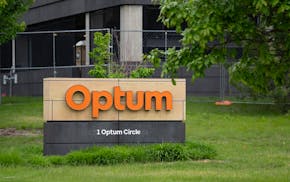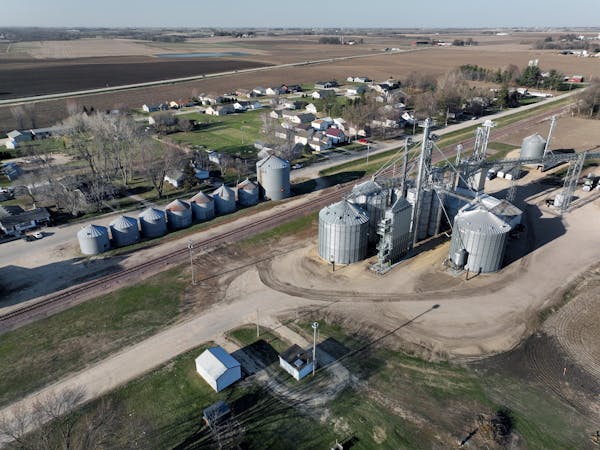A proposal to tax the fertilizer that farmers use to boost crop yields — in the hopes of treating nitrate pollution of water in southeastern Minnesota — passed its first test on Thursday in the House Agriculture Committee.
"We've probably done more than anybody else [to address nitrate pollution]," said Rep. Rick Hansen, DFL-South St. Paul, the bill's author. "But it's not working."
Nitrogen-impaired drinking water in Minnesota's farm country has been a reality for rural landowners with private wells for decades, particularly in the southeastern portion of the state with porous geology. Hansen said the time for incentives for corn farmers to stop using fertilizer has passed.
The groundwater pollution in the Driftless Region has left private wells, streams and rivers contaminated, with some rural residents reliant upon bottled water.
Under Hansen's measure, ag retailers and vendors for nitrogen fertilizer would pay a 99-cent-per-ton tax. The tax, expected to draw $3 million, would go to community health boards in eight southeastern counties to be used on safe drinking water, with priorities for mothers and infants.
Martin Larsen, who farms near Byron in southeastern Minnesota, told the committee he can measure nitrate leaching in his land from fertilizer application over half a century ago.
"We must grow corn and soybeans differently, or grow a crop other than corn and soybeans," Larsen said.
The bill, which was approved largely on party lines in a 7-6 vote in the House Agriculture Finance and Policy Committee, comes months after the EPA ordered state authorities to deliver drinking water to residents with contaminated wells in southeastern Minnesota. According to a petition to the Environmental Protection Agency filed last year by Minnesota Center for Environmental Advocacy, the Minnesota Well Owners Association and others, roughly 80 residents use private wells for drinking water in the impacted region.
Farmers — many of whom say they are dedicated to the goal of clean water — balked at another fee, especially in a time of downward commodity prices. They already face other taxes for different types of fertilizers.
"A quicker way to get results would be to have more events like what we saw in Olmsted County," said Dan Glessing, president of the Minnesota Farm Bureau. Last week, farmers gathered in Olmsted County to learn more about precision farming practices, limiting use of nitrogen in fields.
In a contentious moment, Lee Helgen, executive director for Minnesota Crop Production Retailers, an association comprising members who'd directly pay the tax, pressed onward with testimony after the committee chair, Rep. Samantha Vang, DFL-Brooklyn Center, said his allotted time was up.
"There's not a compelling nexus in policy between a statewide fertilizer tax and allocating funds for a very specific, narrow geographic" concern, Helgen said, labeling the policy approach "defective."
That nitrates have drifted into the state's groundwater over decades as the corn crop acreage has increased is not disputed. But what hasn't achieved consensus is the best approach to limit the use of fertilizer, which is largely relied upon by farmers to grow yields and, in some cases, stay on the land in a time of high rental rates.
A separate bill, brought by Rep. Steven Jacob, R-Altura, to provide farmers with property tax relief for enrollment in the state's agricultural water certification program, is expected to also receive a vote from the committee.
On Monday, the Minnesota Pollution Control Agency head told the Senate Agriculture Committee that while nitrate levels in the Mississippi River in southeastern Minnesota had slightly decreased since 2008, such depletion wasn't happening fast enough to alleviate the impaired waterway.
"This is like Swiss cheese," said Commissioner Katrina Kessler. "The groundwater, the surface water, they are one. It's interconnected."
During the same meeting, Sen. Nathan Wesenberg, R-Little Falls, urged lawmakers and regulators caution in developing nitrate-mitigation strategies that would harm farmers, who he characterized as "using best management practices" in fertilizer application.

Delta hiked fares for solo travelers, until Twin Cities travel experts caught the change

In first speech back, UnitedHealth's new CEO pledges to review hot-button issues

A child had measles at Mall of America, concerning state health officials who don't know source

Ramstad: Gov. Walz, things are not getting done in Minnesota

